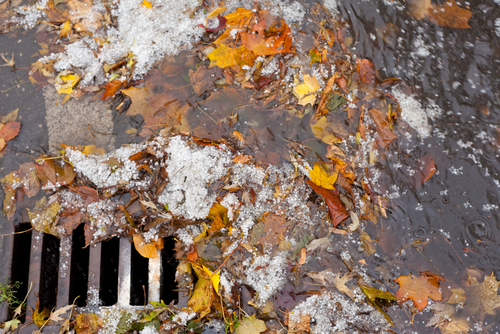 |
One excellent example of this is the Chesapeake Bay, North America’s largest and most biologically diverse estuary. The Chesapeake Bay is 64,000 square miles in six states and the District of Columbia, and is fed by more than 100,000 rivers, streams, and creeks. The area is both highly urbanized and rural, which means Chesapeake Bay receives almost every conceivable kind of runoff every time it rains or snows. Unfortunately, over the years, the Bay has been degraded to the point that traditional activities like fishing and crabbing have become almost impossible.
In 2010, the U.S. Environmental Protection Agency (EPA) implemented the Chesapeake Bay Compliance Enforcement Initiative to assess, monitor, and enforce a broad range of regulations for both point source and nonpoint source discharges. The initiative specifically called attention to wastewater treatment facilities, municipal separate stormwater systems (MS4s), large construction sites, animal feeding operations (AFOs), and hazardous waste sites for targeted programs designed to increase regulatory oversight and decrease pollutant loads.
Need to know if one of your chemicals is on an OSHA, DOT, SARA, CERCLA, RCRA, or state list of regulated chemicals? The Book of Chemical Lists will instantly tell you everything you need to know. Learn More.
Another very important action was the establishment of total maximum daily loads (TMDLs) for the Bay and requiring all seven Bay jurisdictions to develop Chesapeake Bay Watershed Implementation Plans defining actual goals for pollutant reductions and the policy and enforcement activities necessary to meet them. To keep track of the many enforcement activities in the Chesapeake Bay watershed, the EPA also launched an online map that pinpoints locations associated with enforcement.
On the other side of the country, residents of Washington’s Puget Sound are also waging war on pollution to try to restore their vast estuary system. Not only is Puget Sound one of the most biologically diverse ecosystems in America, it too is tied directly to the economic health of the entire region for tourism, sport and commercial fishing, and shellfish production. Moreover, Puget Sound is shared by the United States and Canada and any efforts to restore it require international cooperation.
Leading the way is the Puget Sound Partnership, a bipartisan group representing citizens, business, government, tribes, and scientists to access and tackle the many different sources of pollution in the Sound. Founded in 2007, the Partnership has a well-defined agenda to clean up watersheds, including extensive monitoring for conditions and pollutants in both fresh and saltwater.
Look up chemicals by CAS names or numbers with The Book of Chemical Lists. Saves you hours and hours of research time! Order Now.
To assist the restoration effort, the EPA and the state of Washington targeted wastewater treatment facilities as well as unpermitted stormwater sources. In April 2013, the EPA and the U.S. Department of Justice settled with King County and the city of Seattle to stop unauthorized combined-sewer overflow (CSO) releases, sanitary sewer overflow (SSO) releases, and myriad other violations, including National Pollution Discharge Elimination System (NPDES) permit violations. Several months later, the EPA announced enforcement activities against four different area companies for numerous violations relating to illegal and/or unpermitted stormwater activities and resulting in cumulative penalties of almost $850,000.
These two examples are among the largest in the country but there are thousands of watersheds under equal scrutiny in every U.S. state and territory. As far back as the mid-1990s the EPA began taking a watershed approach to NPDES permitting and since then, state and local governments have developed an array of watershed management plans covering everything from point-source discharges to construction activities to wetland mitigation. Each of these plans defines goals but they also spell out enforcement actions so even businesses in small watersheds need to be on their toes and be sure necessary permits are in place and all regulatory requirements are in order.
